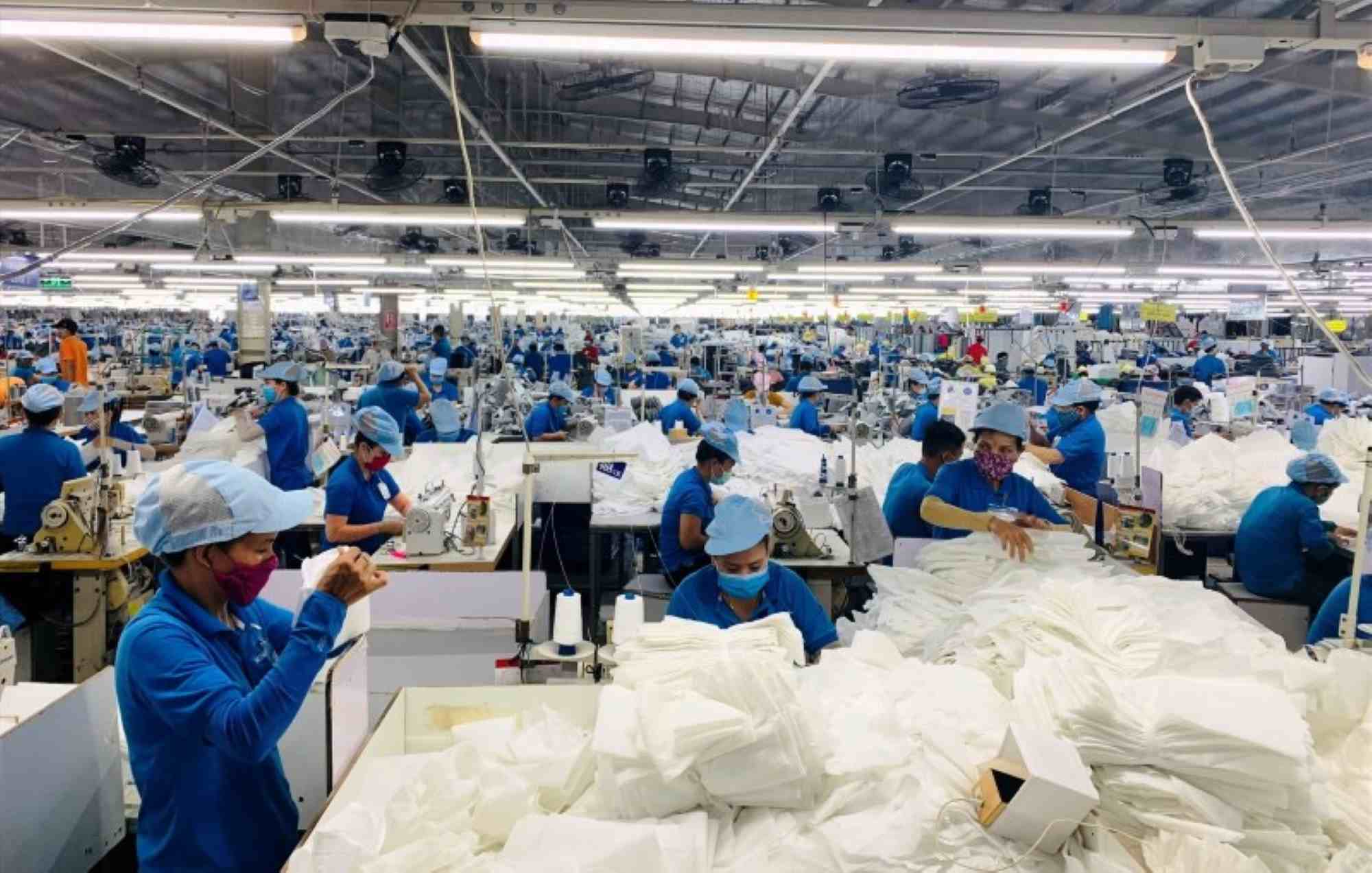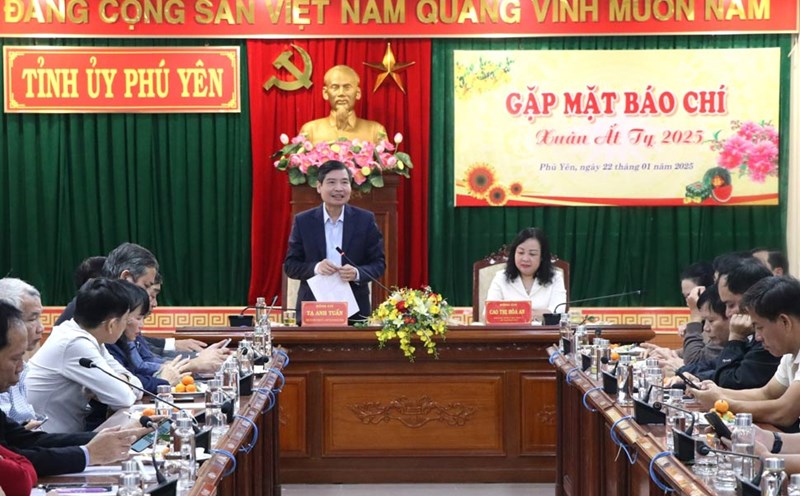Direct impact on import and export activities
In early February, the world trade situation fell into tension when the US announced a 25% tax on imported goods from Mexico and Canada, and an additional 10% on China from February 4. However, later, US President Donald Trump announced a one-month suspension of tariffs on Mexico and Canada.
The 10% tariff increase on Chinese goods remains in effect, prompting Beijing to immediately announce that it will impose a 15% tariff on coal and liquefied natural gas (LNG) products; and a 10% tariff on crude oil, agricultural machinery, and large-engine cars imported from the US.
At the Government meeting on February 5, Politburo member and Prime Minister Pham Minh Chinh assessed that the complex fluctuations of the world's political economy and major trade partners such as the US and China have a direct impact on Vietnam, especially on exports and production and business. The Prime Minister asked Government members to forecast and closely analyze new issues such as the possibility of a global trade war in the near future. This would disrupt supply chains and narrow Vietnam's export markets. The Prime Minister asked ministries, branches and localities to propose solutions and response scenarios so as not to miss opportunities and maintain development momentum.
Deputy Minister of Planning and Investment Tran Quoc Phuong assessed that given the complicated developments in the world situation, export activities this year may face relatively large challenges due to the US's protectionist and tax policies towards its trade partners.
The Deputy Minister of Planning and Investment said that the Prime Minister emphasized the importance of making the most of the free trade agreements (FTAs) that Vietnam has signed, while promoting the exploitation of new trade agreements. Notably, the agreements with the Middle East region, along with a number of other FTAs under negotiation. In particular, it is necessary to ensure a close connection between input and output of production. If stable output cannot be maintained, domestic production will face difficulties. Therefore, finding and expanding consumption markets is a key factor to promote production and stabilize growth in the coming time.
According to Minister of Industry and Trade Nguyen Hong Dien, the entire industry needs to continue to focus on effectively exploiting existing markets, while promoting negotiations, signing and opening new markets, contributing to supporting businesses in diversifying markets, products, supply chains and boosting exports.

What is the solution for Vietnam in the face of global economic fluctuations?
Speaking with Lao Dong, Dr. Nguyen Quoc Viet, Deputy Director of the Vietnam Institute for Economic and Policy Research (VEPR), assessed that with the possibility of a global trade war, in the coming time, it could cause disruptions in supply chains and a decline in both global production and consumption, affecting Vietnam's export growth and economic growth momentum.
In addition to the direct economic impact, there is also the risk of leading to a trend of de-liberalization and a decline in the role and influence of global organizations and institutions. This could cause a trend of fragmentation in both geopolitics and the world economy, becoming a major barrier to trade and liberalization of global investment flows, affecting Vietnam.
According to Dr. Nguyen Quoc Viet: “In the coming time, Vietnam needs to continue to prepare for possible global economic scenarios. In terms of diplomacy, Vietnam has quickly built its image as a friendly, open country and a reliable partner in the international arena, committed to actively participating in global multilateral institutions and agreements. Vietnam needs to strengthen cooperation and dialogue with the business community, especially large investors from the United States and developed countries, to gain support and connections in the context of the new policies of the Trump administration. Accelerate the improvement of the business environment, especially in the fields of business services and high technology, to attract more foreign investment and strengthen connections to the global value chain. Diversify growth drivers, not only relying on exports and attracting FDI but also developing internal strength through innovation and autonomy of domestic economic sectors”.
Mr. Tran Thanh Hai - Deputy Director of the Import-Export Department (Ministry of Industry and Trade) informed that in 2025, the industry and trade sector aims to increase its export of goods by about 12% compared to 2024. However, in 2025, the world context is forecast to continue to change rapidly and unpredictably. The US's threat to impose new taxes on imports from Canada, Mexico and China has raised concerns about global trade tensions. The above three countries are exporting to the US many items from electrical equipment, household appliances to textiles, footwear, agricultural products, etc. Therefore, the related supply chain will be more or less affected, in which Vietnam will also be affected.
However, the Ministry of Industry and Trade has prepared proactive scenarios to promote and maintain the export market. In particular, it has developed scenarios to respond to the impact of the US President's new tax policy.
In that context, the Ministry of Industry and Trade continues to focus on effectively exploiting the Free Trade Agreements (FTAs) that have come into effect and been signed, implementing new agreements to expand and diversify markets, import and export products, and supply chains; enhancing the exploitation of neighboring markets with potential, shifting strongly to official exports associated with brand building, promoting sustainable exports; continuing to innovate and improve the effectiveness of trade promotion work.
The Ministry of Industry and Trade recommends that export enterprises regularly update market information, proactively respond and be transparent about their origin; make good use of FTA agreements, exploit potential markets and niche markets to seize opportunities and overcome challenges in the context of global trade forecast to have many unpredictable developments.
US-China trade war: Nearly a decade of tension
US-China trade relations have been strained for nearly a decade, starting in 2018 when the US imposed 25% tariffs on $50 billion worth of Chinese goods, leading to a series of tit-for-tat retaliations.
In 2019, tensions escalated when the US raised tariffs to 25% on $200 billion worth of Chinese goods, while Beijing also raised tariffs on $60 billion worth of US goods. That same year, the US banned Huawei from accessing US technology, pushing the war into the technology sector.
In 2020, the two sides signed a "Phase 1 Trade Agreement", with China pledging to buy an additional $200 billion in US goods, but the COVID-19 pandemic caused this plan to fall through. Under President Biden, the US has maintained Trump's tariffs and tightened technology controls on China.
In 2024-2025, the US will continue to increase tariffs on Chinese steel and aluminum and expand trade sanctions. China responded by filing a complaint with the WTO. Despite temporary agreements, the trade conflict between the world's two leading economies has shown no signs of cooling down. Luc Giang











